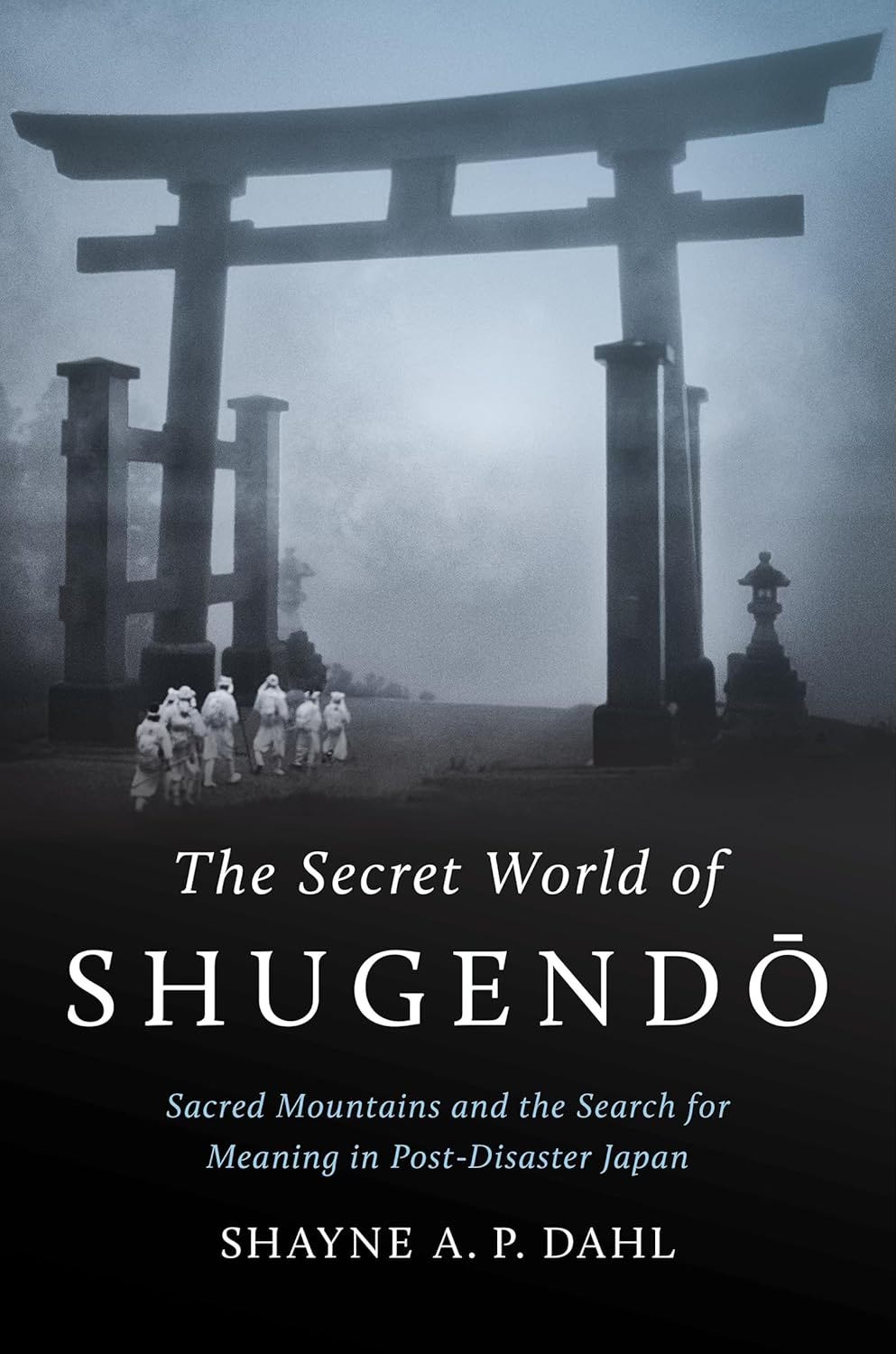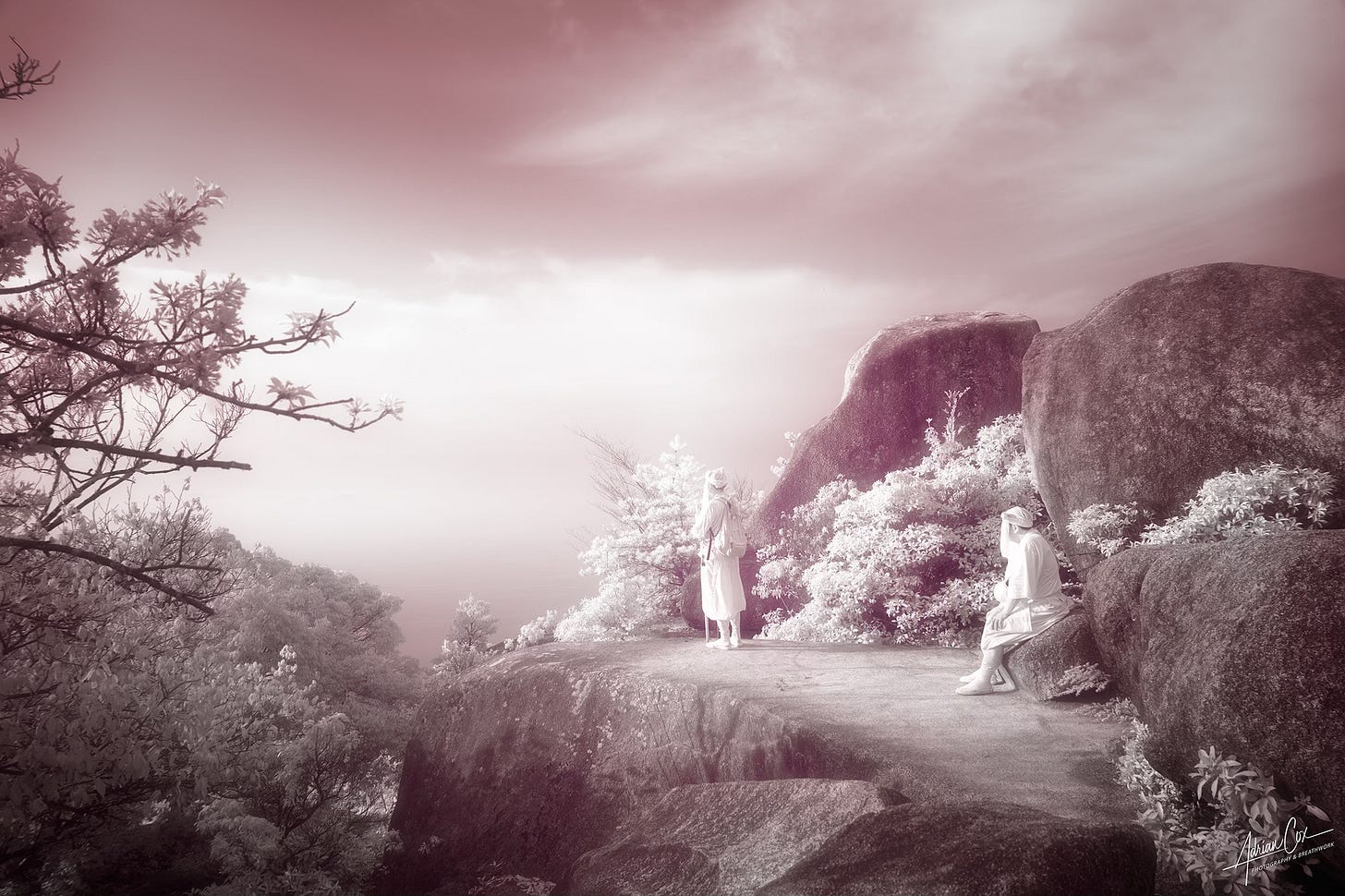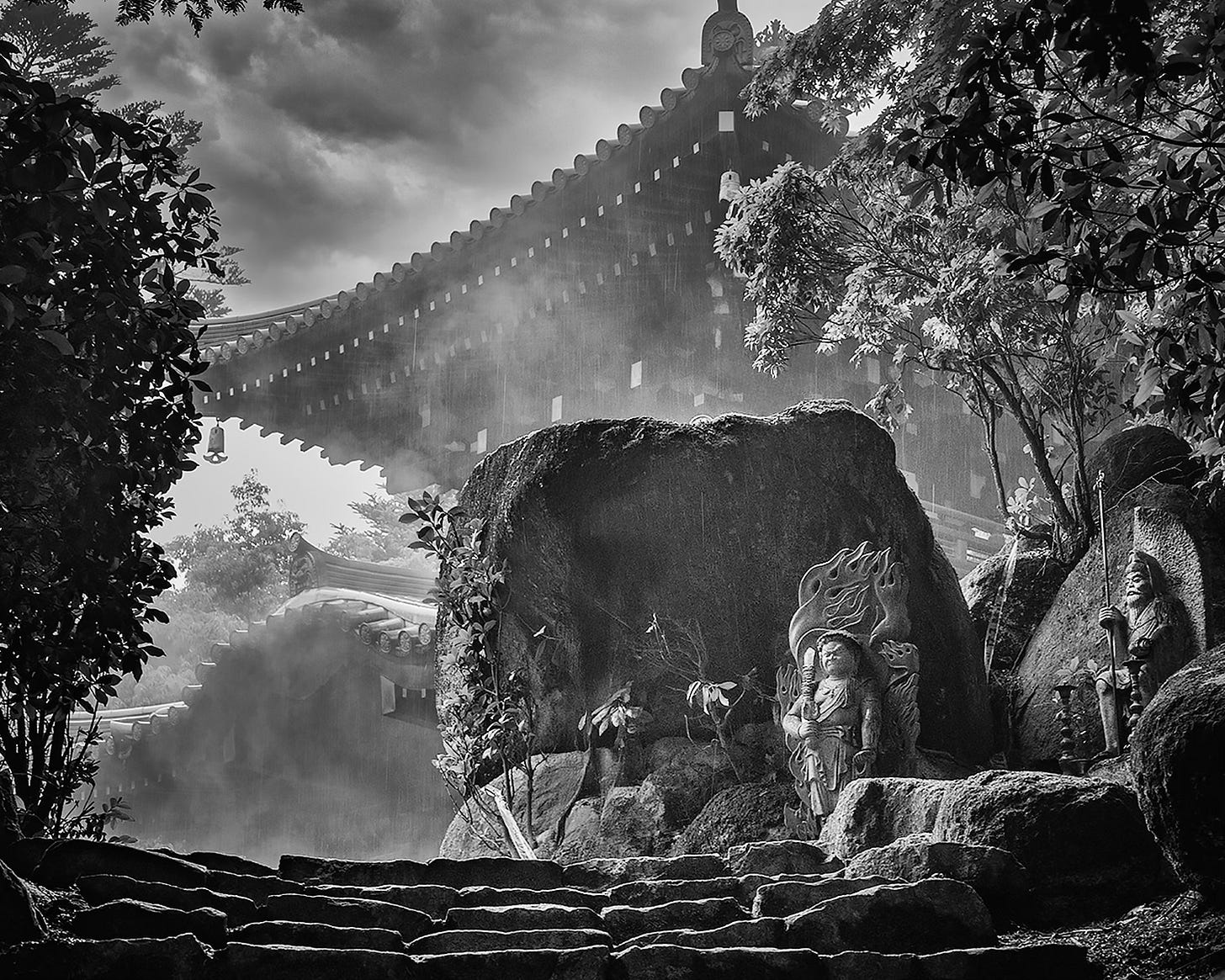Why Buddhist Monks and Yamabushi Jingle When They Walk
The Shakujo Explained: Sacred Tool, Bear Bell, and Wake-Up Call
If you missed part one on what makes a Shakujo a Shakujo, you can read it here, or read the whole thing as one here (just don’t miss the extras at the bottom of this post).
Part 2: The Deeper Meaning of the Shakujo
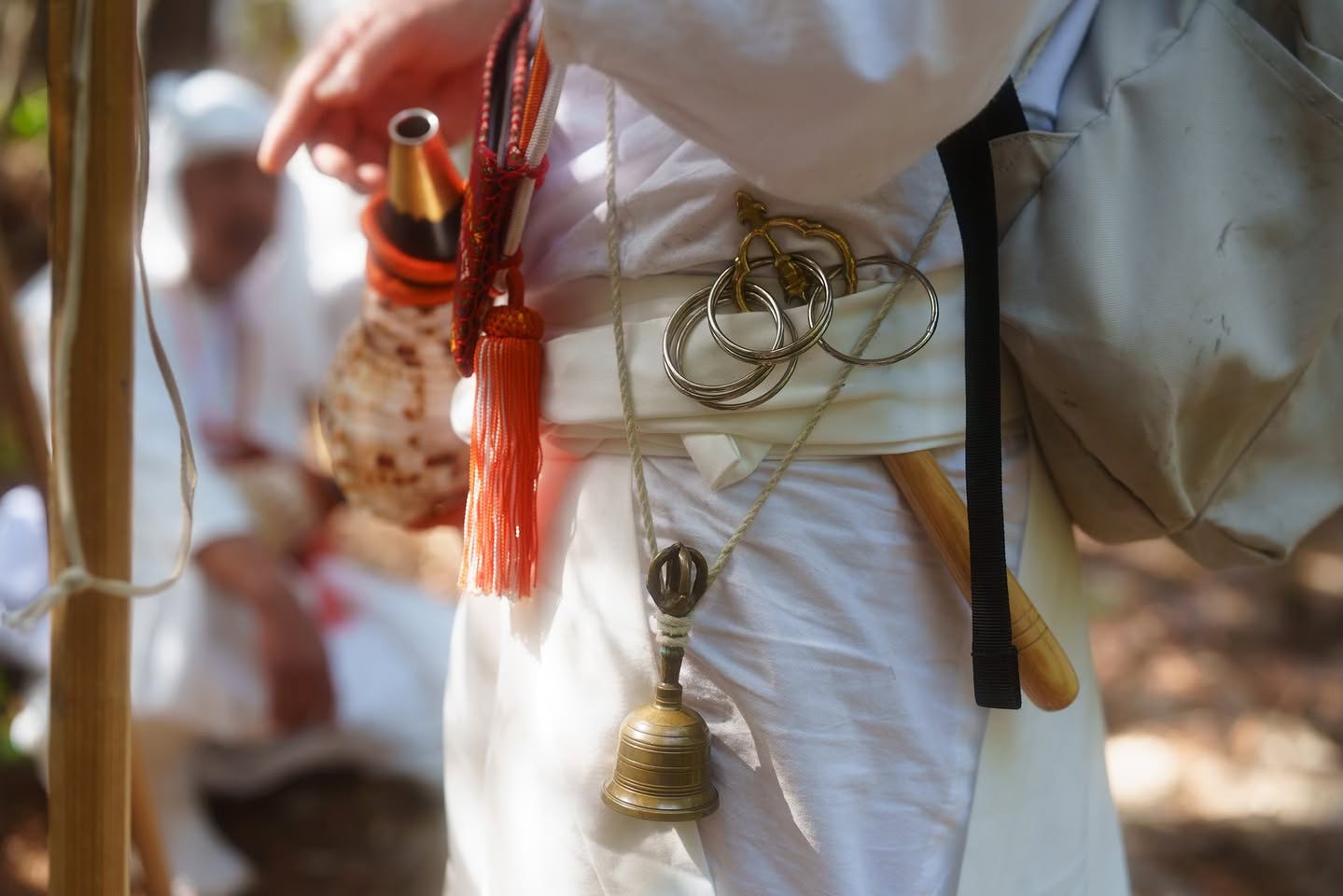
Shakujo come in all shapes and sizes. And I really mean that. Some are too big to be practical. The biggest are around 170cm — taller than the average Japanese woman. These lean against walls or stands and, during rituals, are rotated rigorously by priests to really make their presence known.
The Shakujo, not the Japanese women.
Some yamabushi walk with lighter staffs, others carry small handheld Shakujo, like the kind Master Hoshino has. The smaller ones are used during Buddhist rituals instead of the Furisuzu bell. Training under Master Hoshino, that’s when we recite the Heart Sutra or chant Shingon mantras for the various Buddhas and Gongen avatars such as Fudo Myo’o.
What the Rings and Loops Mean
A Yamabushidō participant actually made a great video breaking it down, you can find it here:
Shakujo vary in the number of rings and loops, but I’m pretty sure I’ve only ever seen ones with six rings. According to various Buddhist teachings, the number of loops and rings on a Shakujo carries symbolic weight:
Four loops: The Four Noble Truths (Truth of Suffering, Truth of Cause of Suffering, Truth of End of Suffering, and Truth of Path that Leads to the End Of Suffering)1
Six rings: The Six Perfections (Pāramitā: giving, ethical discipline, patience, vigorous effort, meditation, wisdom (prajñā)), or the Six Realms of Saṃsāra, the cycle of death and rebirth
Twelve rings: The Twelvefold Chain of Cause and Effect. This is also why yamabushi Tokin, the black hats we wear during the Akinomine Autumn’s Peak Ritual, have twelve folds.
Famous Shakujo Bearers
The Pewter Staff Sutra (Japanese link) says monks should carry a Shakujo because the Buddhas of the past, present, and future all did.
If that’s not a good enough reason,
I don’t know what is.
Besides Daizan-san, here are a few notable beings who carry Shakujo: Jizo-san, The Thousand-Armed Avalokiteśvara, En no Gyoja, and, um… Master Hoshino:
Jizō-san
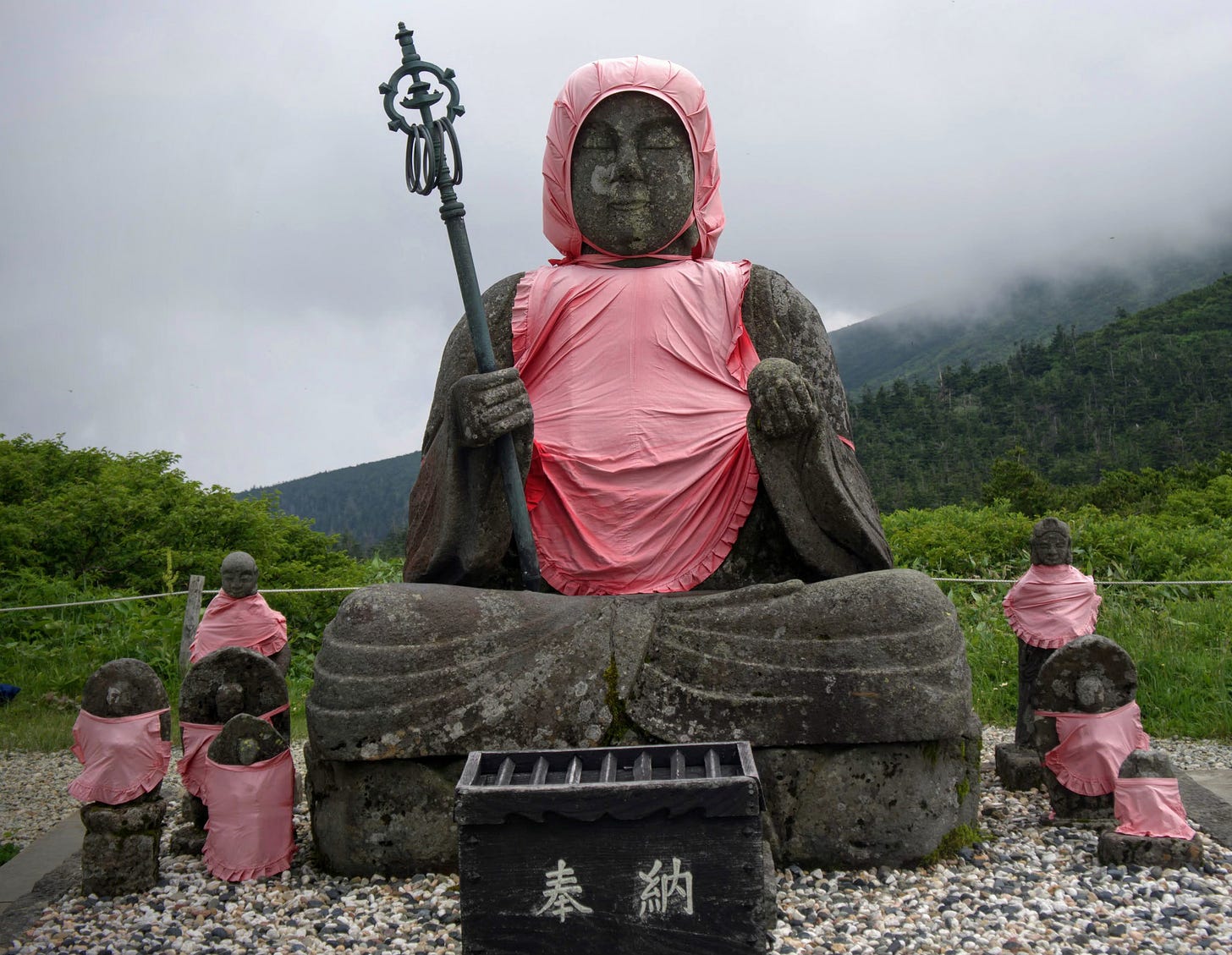
Perhaps the most iconic Shakujo bearer is Jizō (Kṣitigarbha). His staff usually has six rings, a reference to the Six Realms of Saṃsāra (as detailed in the video by Daizan-san), which you would already know if you had read my article on Jizo-san:
Hell
Hungry Ghosts
Beasts
Humans
Titans
Gods
Why does Jizō carry a Shakujo?
To guide beings through the Six Realms: His staff jingles to signal his presence, even in hell, helping lost souls find the way.
To ward off danger: Historically, as we covered in part one, it scared off animals and demons alike.
To wake us up: The ringing reminds us of karma, impermanence, and compassion.
Jizo-san’s Shakujo is accompanied by the wish-fulfilling jewel in the other hand and the lotus he stands on. This gives you a complete picture: a being committed to walking with us through the darkest realms, lighting the way as he goes.
Thousand-Armed Avalokiteśvara (Senju Kannon, 千手観音)
Avalokiteśvara, Kannon as they’re known in Japan, is the bodhisattva of compassion. In their thousand-armed form (Senju Kannon), each hand holds a different object representing a unique method for saving sentient beings.
As you can probably guess, among these is sometimes a shakujo staff.
Just like with Jizō, the shakujo is more than just a prop, it’s a symbol of compassion in motion.
Why does Avalokiteśvara (sometimes) carry a Shakujo?
Shake beings awake from ignorance,
Ward off evil in even the darkest realms,
Guide the lost with its ringing sound.
The Shakujo is a literal wake-up call, a reminder that no one is beyond help, and that even in the most hellish conditions, compassion will find a way through. In Avalokiteśvara’s thousand hands, the shakujo becomes one of many tools for liberation.
En no Gyōja
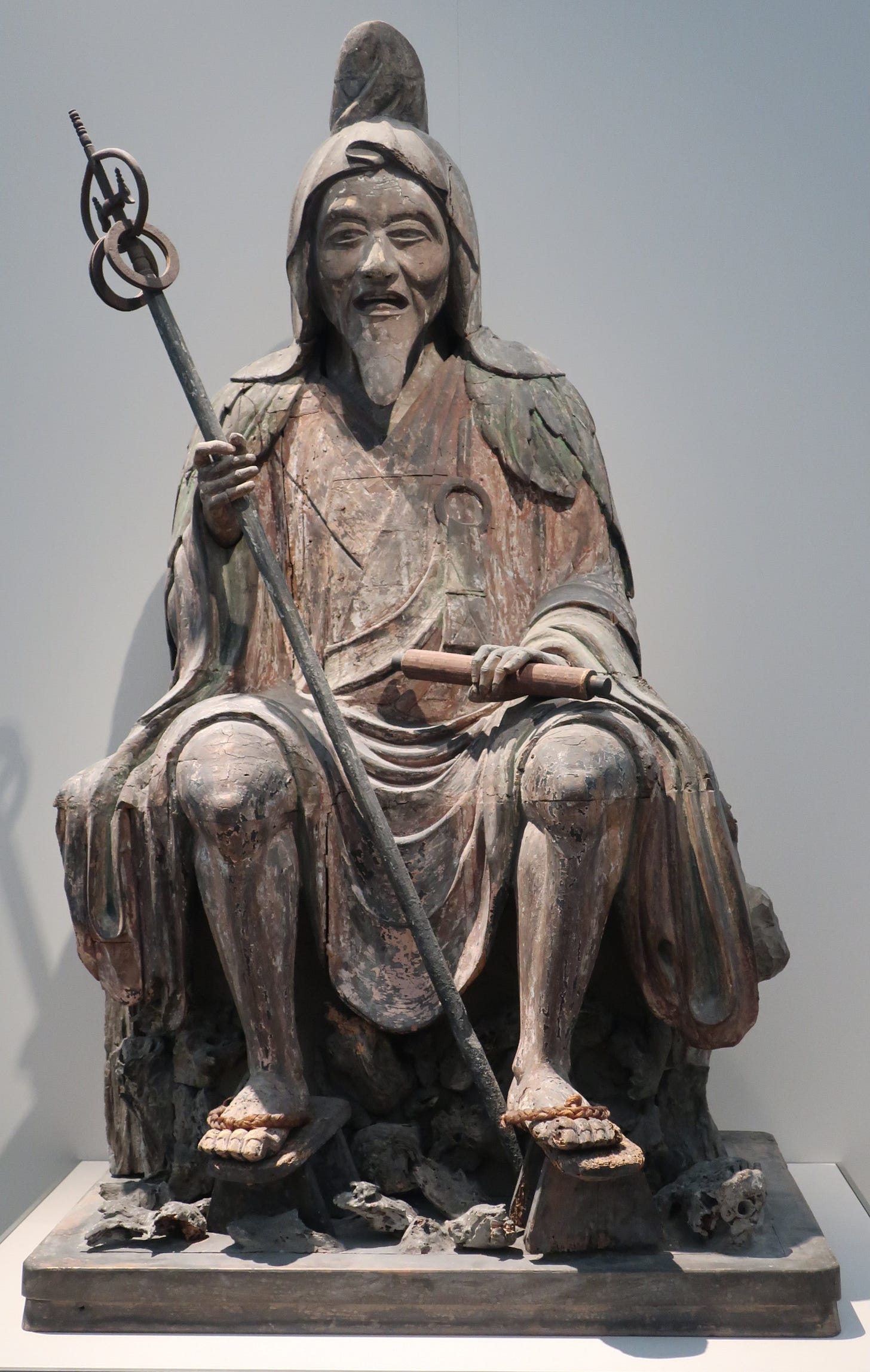
The legendary founder of Shugendō, En no Gyoja, is almost always depicted holding a shakujo.
Why does En no Gyōja carry a Shakujo?
Protection during ascetic training in the wild mountains,
Mastery over spirits and demons he was said to command,
Spiritual authority as a guide between realms.
Shugendō practice is all about crossing the boundary between the profane and the sacred. In that sense, the jingling of the shakujo wasn't just for scaring off animals, it was a way to declare one’s passage into the unseen worlds.
As mentioned before, legends even say that En no Gyōja used his staff to command divine beings, ward off evil, and summon spiritual forces to aid in his mountain practices. It was both a practical tool for survival and a mystical tool for transcendence.
Master Hoshino and the Shakujo
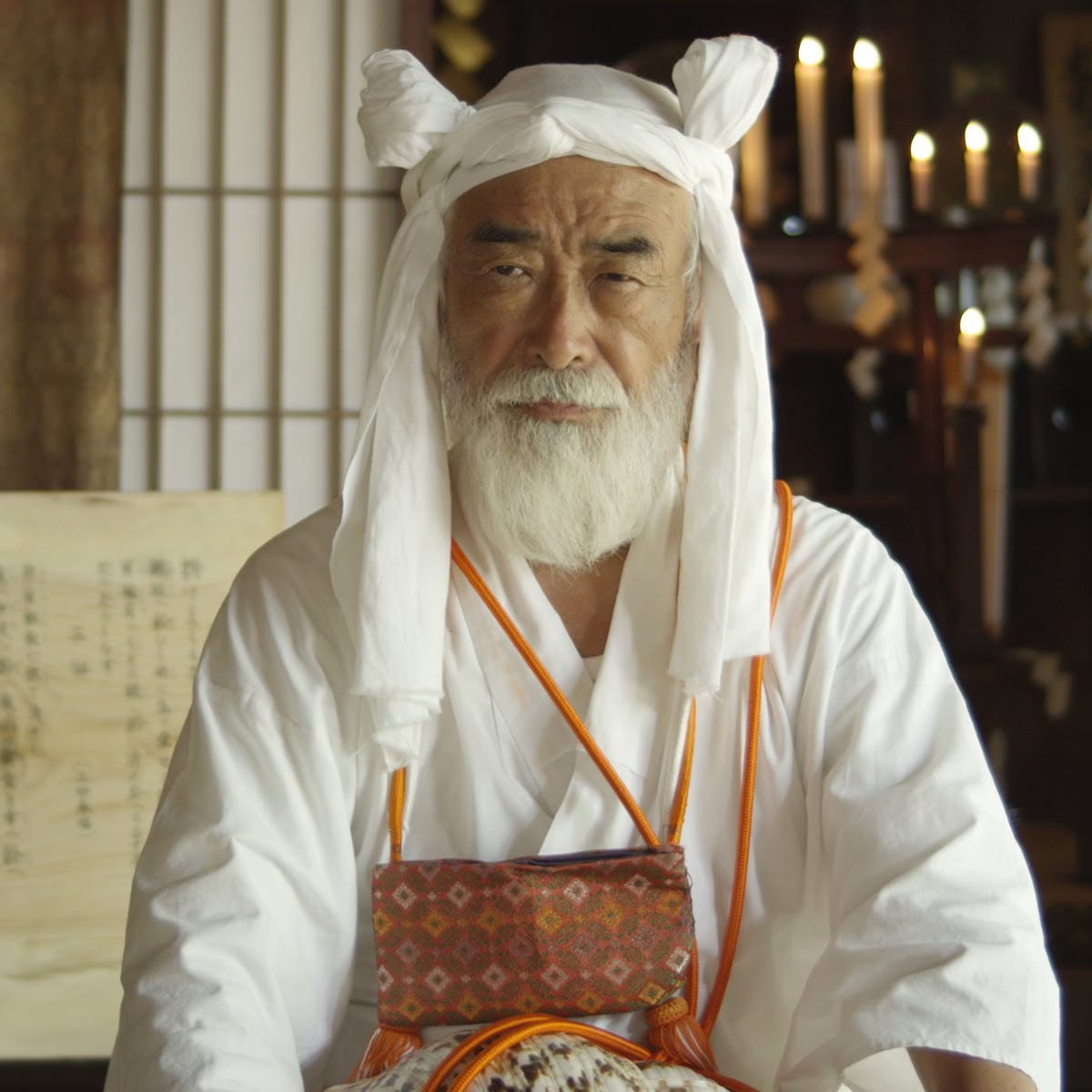
Shakujo is one of those things. It’s Buddhist in nature, but I’m a Shinto-based yamabushi. One of the weird guys. When we train through Dewa Sanzan Jinja, we don’t use Shakujo.
However, I also train under Master Hoshino. He does things the old way, Shinbutsu Shūgō, the fusion of Shinto and Buddhism, just like it was before the Meiji-era split.
Yamabushi doesn’t really work by asking.
I mean, I could ask, but Master Hoshino would probably just snap at me and tell me to just do it. So, I have to watch Master Hoshino very closely to see how he does things and take mental notes instead.
Even at (nearly) 80, Master Hoshino is a tank. A living, breathing Fudomyo’o. He goes up and down Gassan, even on a hot day, with just 500ml of water. He’s also somehow transcended sunblock, to say nothing of his prowess under a waterfall. However, multiple times I’ve seen him wipe his brow with his hokan, the white turban thing we wear. So I guess that makes him human.
Why am I telling you this?
Well, because even though Master Hoshino travels as lightly as possible, he always carries with him a furisuzu bell, and a Shakujo. Lately, he’s been leaving the conch at home, maybe because some of us are finally getting the hang of it? I think I can finally get a decent sound now. Took a few years, though.
One Staff, Many Paths
Whether it’s Jizō walking through hell, Avalokiteśvāra reaching out with compassion, En no Gyōja commanding spirits, or Master Hoshino climbing sacred peaks, the staff is the same, but the purpose shifts.
Protection. Compassion. Mastery. Continuity.
The Shakujo isn’t just a prop. It’s a tool of transformation. A symbol of movement between realms, between states of being, and between the seen and unseen.
Every jingle is a reminder: we’re not stuck. We’re still walking. Still waking up. So the next time you hear it, pipe up. It might save you from a bear or something much more sinister.
Want to hear more symbols like this explained through the lens of rural Japan? Subscribe to the Kiwi Yamabushi Substack or explore Daily Yamabushi.
Kiwi Yamabushi Photoshoot
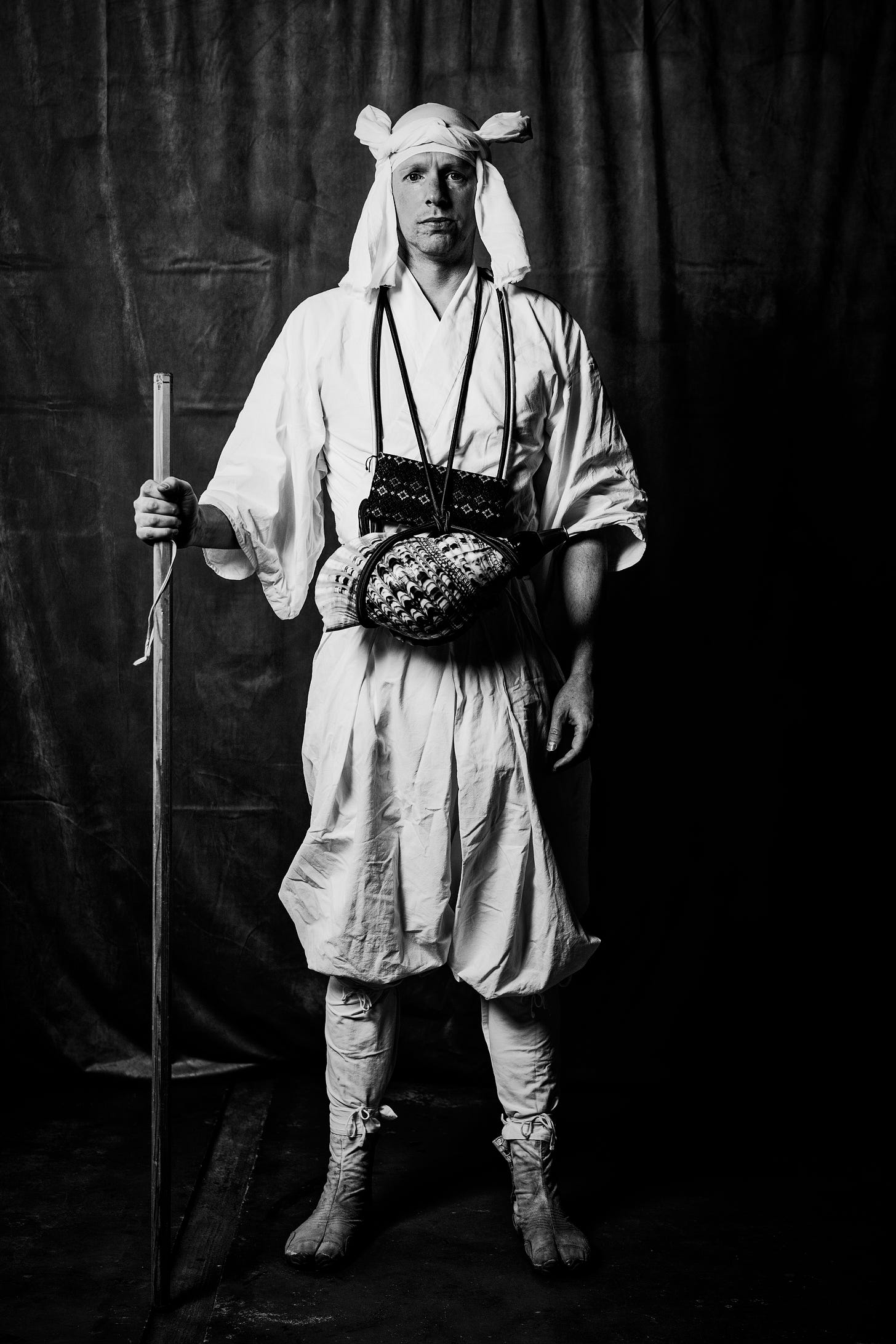
A few weeks back I was enjoying a nice cup of Kissa Cloak’s fine coffee when an unsuspecting man with long hair and an expression of sincerity asked if we could chat. Turns out, this guy was a professional photographer, but not just any professional photographer. Sakata local Hiroshi Honma has photographed the likes of Johnny Depp, Jean Reno, Kiyoshiro Imawano, Hikaru Utada, Ebizo Ichikawa, and Tadanori Yokō before, and he was wondering if he could shoot… um…
Me.
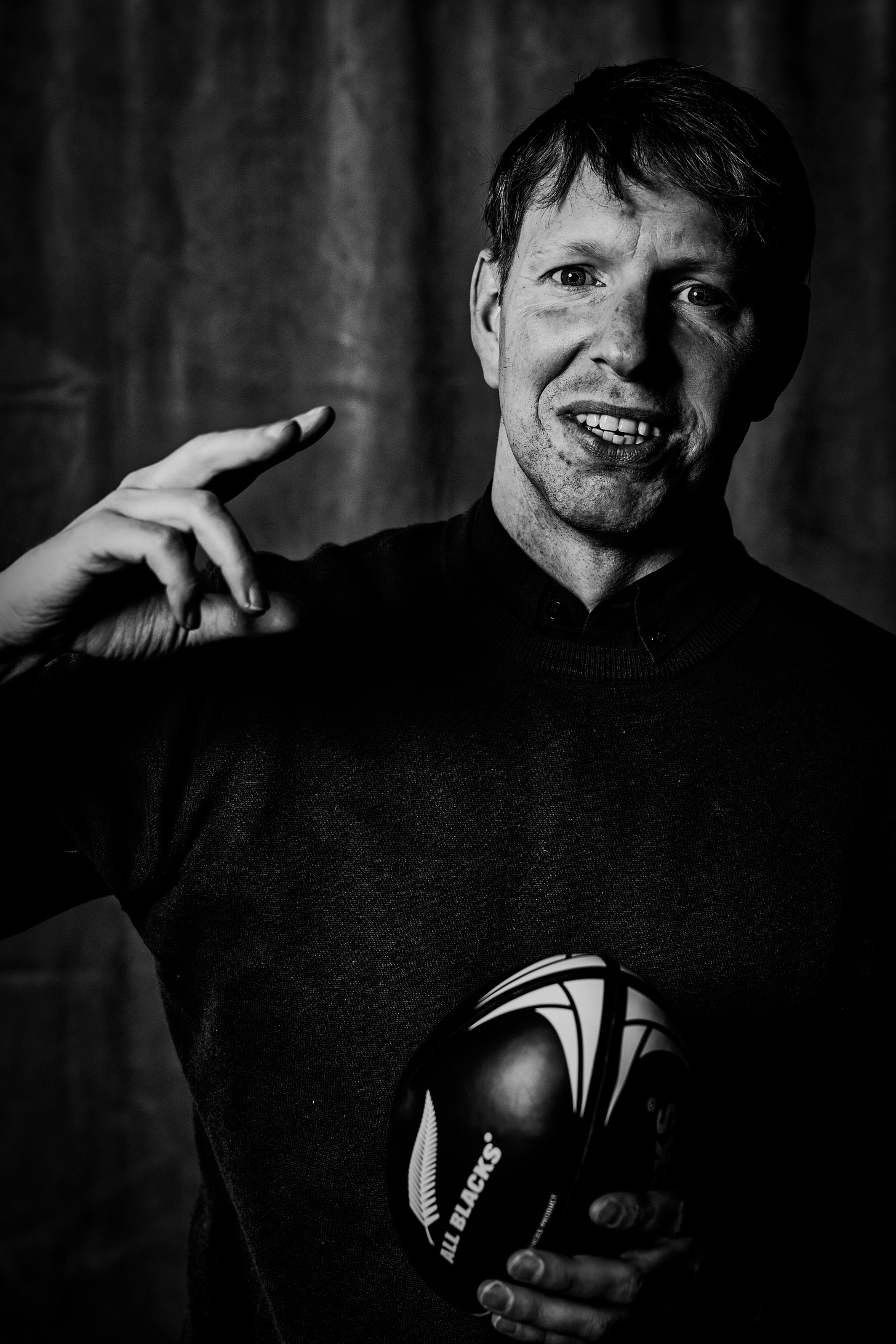
Of course I obliged, and I think it’s safe to say the results speak for themselves.
Give Hiroshi a follow on Instagram, and check out his professional page here.
On that note
You may have noticed the picture above was taken by a certain Adrian Cox. Adrian joined a yamabushi experience last year where he got the shot that would become the cover of Shayne Dahl’s upcoming book (dare I say, bible) The Secret World of Shugendo:
Adrian goes around Japan and takes photographs, which a lot of people seem to do. Only, he takes infra-red photographs as well.
And the results are insane.
Take these two for example, and also give Adrian a follow on Instagram if you want more.
Daily Yamabushi for This Week
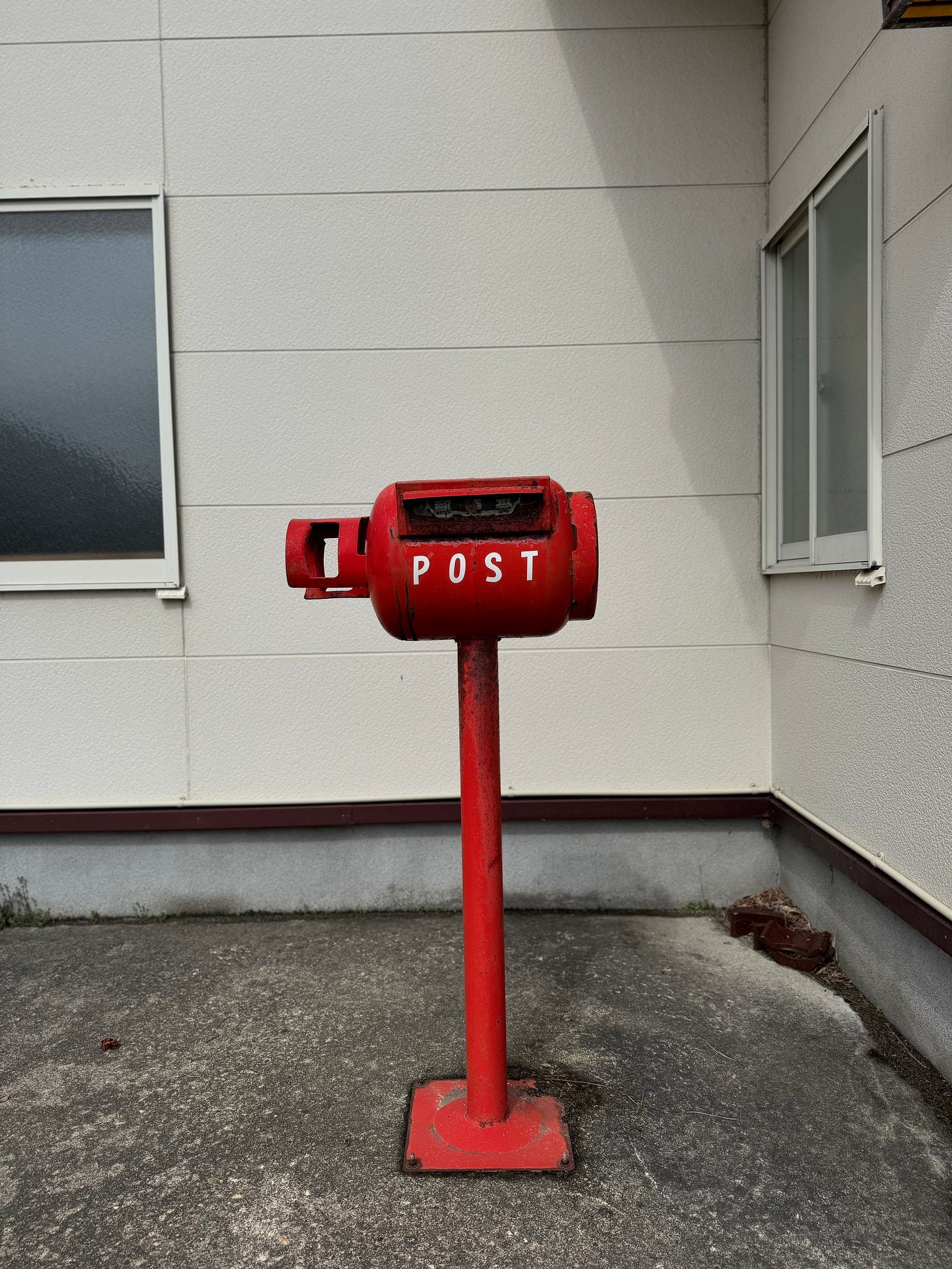
Daily Yamabushi posts for the week of March 18 to April 24, 2025.
Read Daily Yamabushi at timbunting.com/blog. Everything I make is free of charge if you know where to find it. I’d start here.



